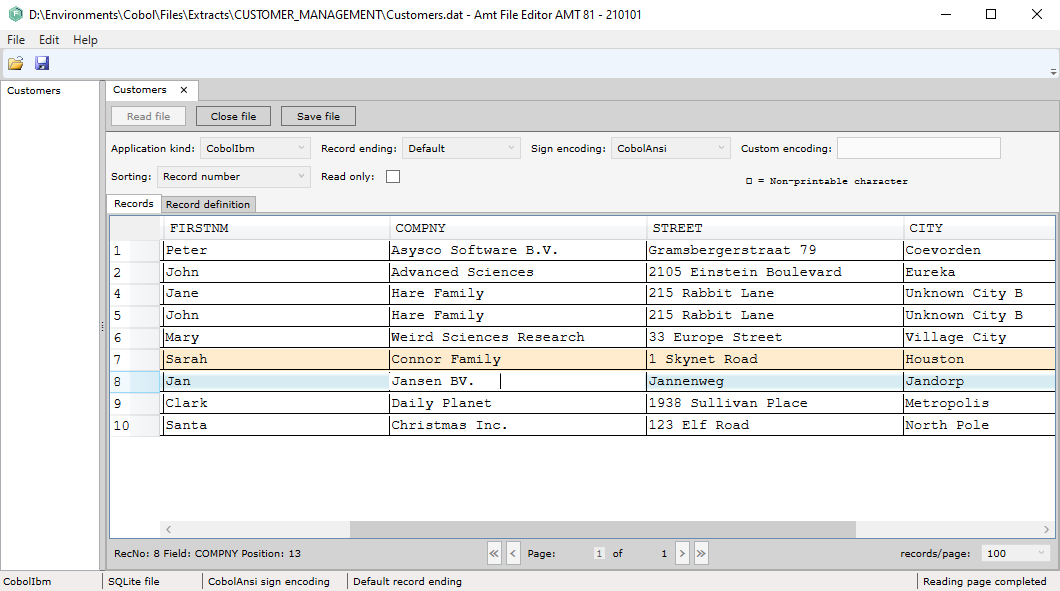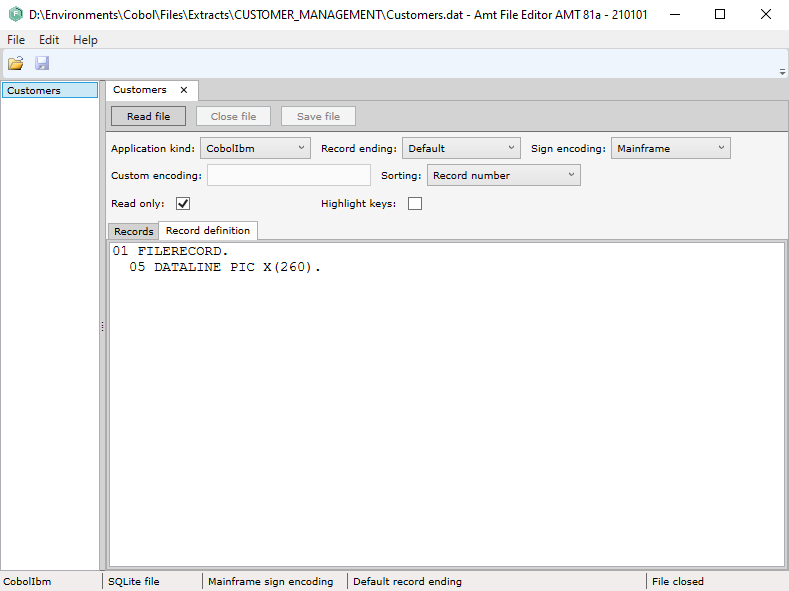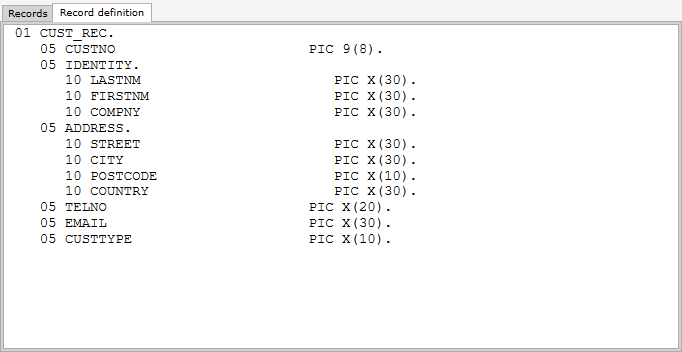AMT File Editor
The AMT File Editor is used to view and edit computation values within files and AMT indexed files in an SQLite format which cannot be read by a plain-text editor like Notepad.

The AMT File Editor is a licensed Avanade product, the AMT File Editor program (AmtFileEditor.exe) is located in the AmtTools\FileEditor folder of the AMT environment.
To use the AMT File Editor, please submit a request to Avanade for a license via the Avanade Service Portal:
https://amp.service-now.com/legacytransformation
The received FileEditor.Lic license file should be placed in the FileEditor folder to be able to use the AMT File Editor program.
Opening a file and setting the Record definition
To open a file inside the file editor, either click the 'Open a file..' icon in the toolbar, select the 'Open..' option under the File menu or right-click in the left area and select 'Open file'. Please note that this does not mean that the file itself is read/opened, only that the file is now available in the file editor.
After a file has been opened, the property settings for this file should be checked and adjusted if needed.
This includes the Application kind, record ending and sign encoding of the AMT application which generated the file.

By default for a new file, the record definition will be set to a single alphanumeric data field.
The actual record definition should be manually adjusted to correspond with the record definition with which the file was created.
For example the record definition for the file in the first screenshot is the following:

After the property settings and the record definition have been set correctly, the content of the file can be viewed by clicking the 'Read file' button.
Reading and editing a file
If the file setting were all correct the records will be displayed in the 'Records' tab divided in columns corresponding to the fields of the record definition.
At the bottom of the tab information about the selected record is displayed as well as a couple of navigational buttons to move to other pages incase the file contains more records than the records/page setting is set to.
To be able to edit the records in a file, the 'Read only' checkbox must be disabled.
Editing records can be done by setting the cursor to the position within a field which should be changed.
Records with changes will be highlighted in the colour blanched almond until the file has been saved by clicking the 'Save file' button.
By right clicking in the Records panel, a couple of options are presented for the selected record/field:
- Show hex editor: This option opens the hex editor window for the selected alphanumerical fields (only PIC X).

In the hex editor the top row contains the field value as readable characters, the bottom row shows the hexadecimal values of the top character.
By selecting a character block in either row, the character can be changed. Changed can be applied by clicking the Save button which also closes the hex editor, clicking 'Close' will discard any changes made in the hex editor. - Append record: Add a new record at the end of the file.
- Duplicate record: Create a copy the selected record at the end of the file.
- Delete record: Remove the selected record from the file.
